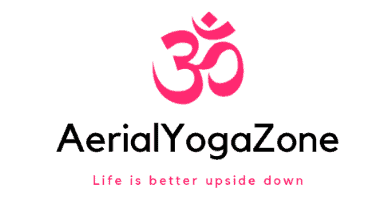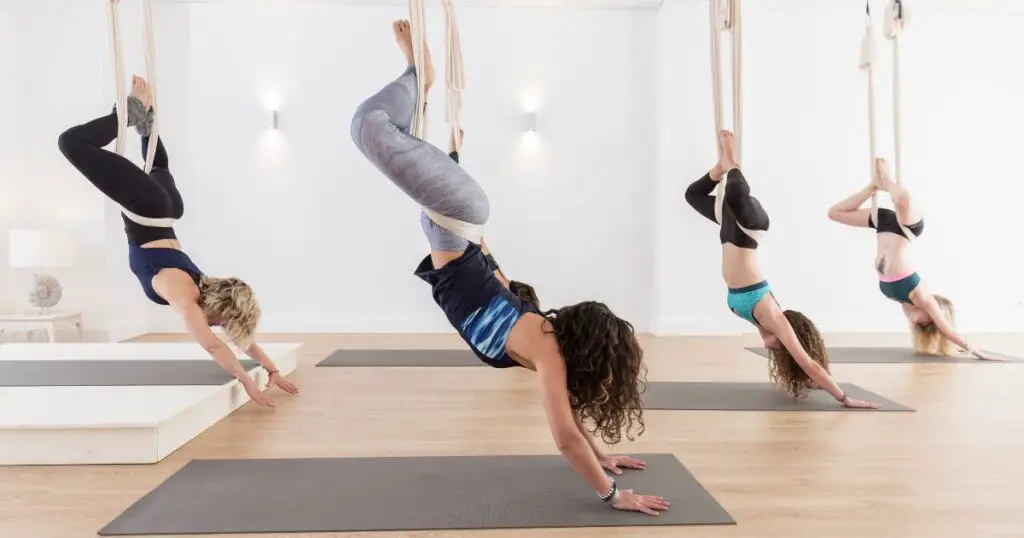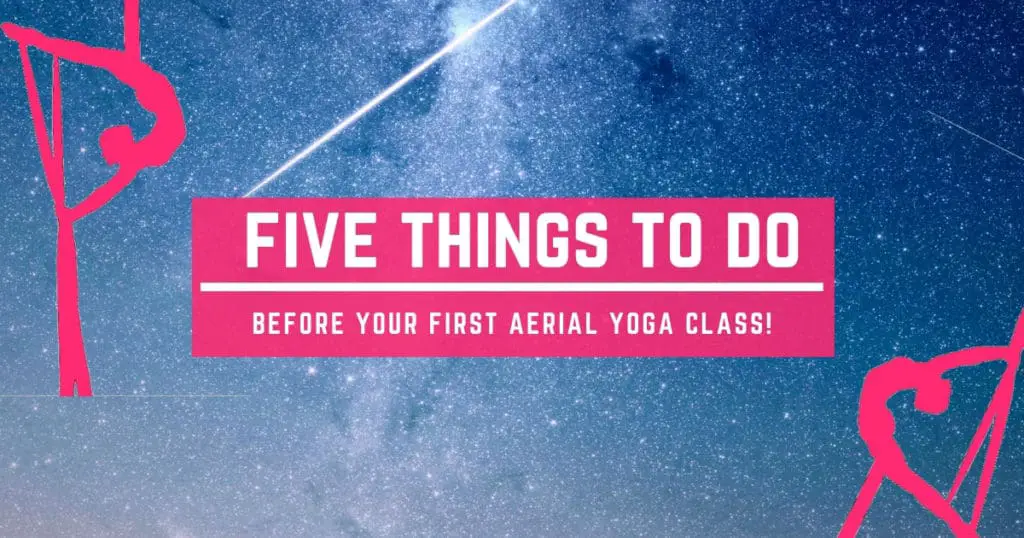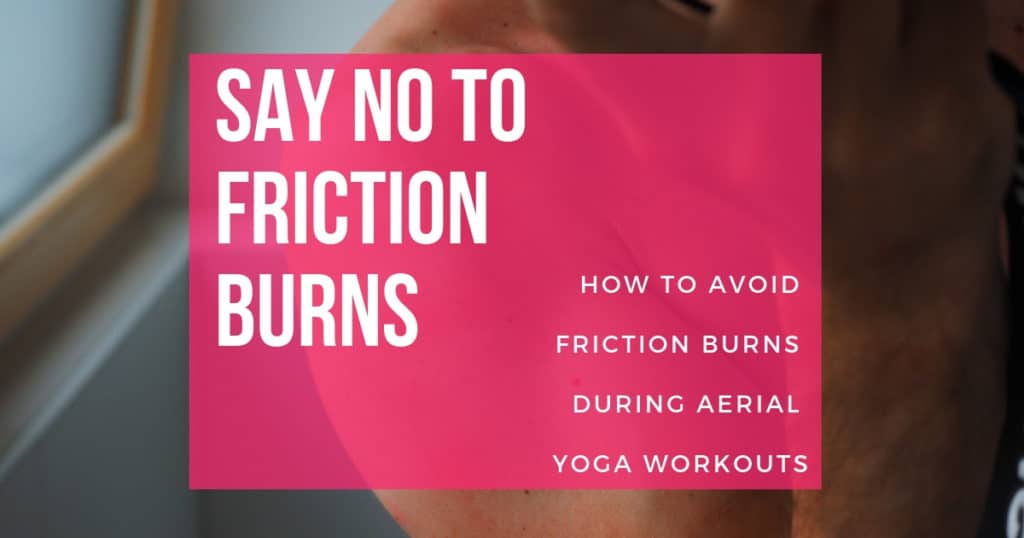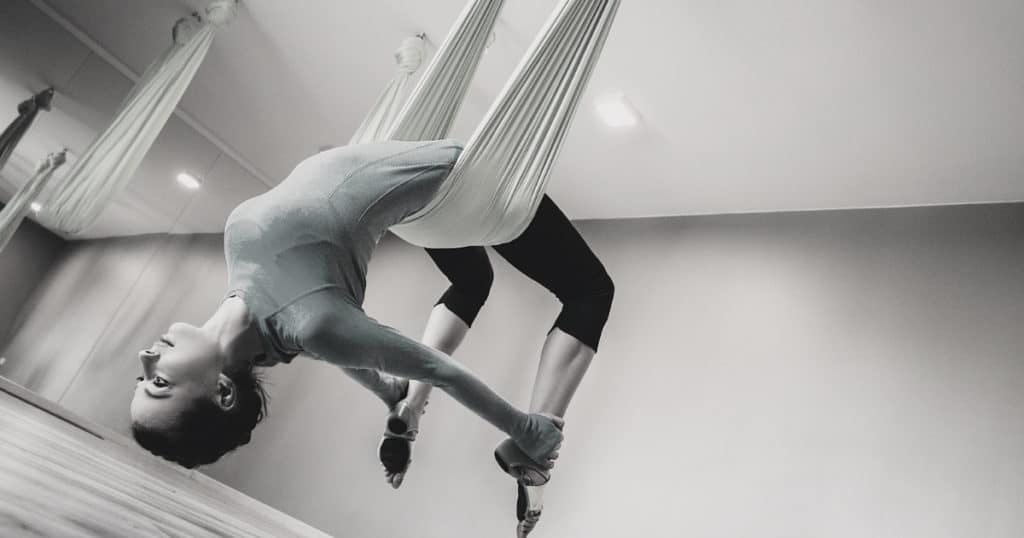If you’re inspired to try aerial yoga, you’re probably wondering about safety. “Is aerial yoga safe?” – it’s a question I get asked so often. It’s perfectly understandable – being suspended in the air does look dangerous! This article contains tips on how to stay safe when practicing aerial yoga.
Aerial yoga is a fast-growing trend that has gained popularity thanks to its fun factor, instagrammability, the variety of movement it offers and the way it makes you feel. But just like any other type of yoga—and other fitness activities in general—aerial yoga poses can be dangerous if done incorrectly or without proper instruction.
So before taking your first flying leap into an aerial hammock or yoga swing, read up on these safety tips so you know what to look out for:
How do I Know if Aerial Yoga is a Good Fit for Me?
If you love yoga and want to try something new, aerial yoga might be a good fit for you. But if heights make you nervous or if you have serious neck or back problems, it’s best not to take the plunge—at least when it comes to being in an aerial hammock.
If you’ve recently had a serious injury, you’re recovering from surgery or you’re pregnant – you should consult with a healthcare professional before attempting aerial yoga. As with any form of exercise, there are specific risks involved.
Aerial yoga can be pretty intense on its own; it’s not exactly relaxing once the class begins. There’s also some extra anxiety you may experience before attempting new poses – which may also be exhilarating!
Please don’t worry about things such as…
- “But I have no balance or rhythm”
- “I’m just not flexible enough”
- “I have no strength at all”
Aerial yoga can improve all of these areas!
Related: What are the health benefits of aerial yoga?
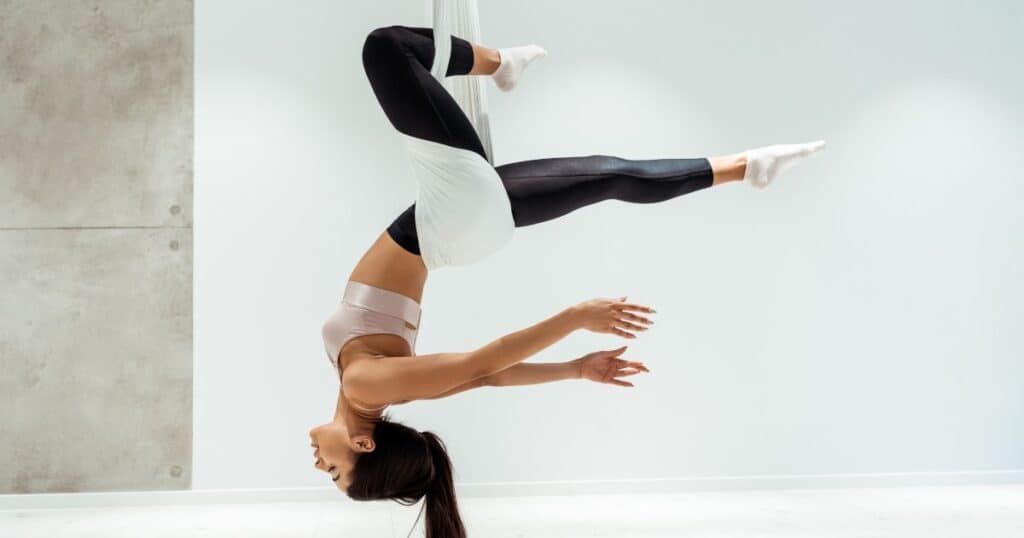
How do I find a Safe, Experienced Aerial Yoga Tutor?
If you’re still not sure whether aerial yoga is for you, here are some things to look for when choosing a studio:
- A good safety record.
- Experience from the instructor.
- Insurance coverage that covers accidents and injuries.
- Training in how to properly use the equipment, including how to help students who may be new or nervous.
- Documentation of instructors’ credentials.
Additionally, it’s important to ask about cancellation policies (generally 24 hours) and refunds in case something happens during your lesson—like an injury or poor experience with an instructor—that requires cancelling or changing your schedule before completing all your classes at that location.
Will I Get Hurt or Injured Doing Aerial Yoga?
Injuries can happen with any sport. But that’s not a reason not to try something.
It’s true that you can get injured if you aren’t careful. If you don’t follow the instructor’s safety instructions, don’t do an exercise properly and are not prepared for the physical demands of yoga in general, then there is a chance you could hurt yourself.
Most importantly though, it’s important to make sure that your mind is mentally prepared for aerial yoga. Aerial yoga requires focus and attention so that you can truly absorb all of the benefits this practice has to offer. When done correctly and safely this practice will strengthen your core muscles while giving them an added stretch at the same time! It’s also great for improving balance as well as flexibility!
It’s extremely important that you learn proper form when practising aerial yoga.
Related: 11 Stunning Aerial Yoga Poses
Is Swinging Upside Down All the Time Bad for my Body?
You’re probably wondering if it’s safe to hang upside down. After all, hanging from the ceiling is not a position we see in everyday life. But there are risks associated with aerial yoga: pulling too hard on your body can cause muscle damage and even torn ligaments.
The upside is that inversion therapy has lots of health benefits—it makes you feel energized, relieves stress and anxiety, improves circulation, reduces blood pressure and more! Like any new activity or sport, before you start swinging around on silk scarves like Cirque du Soleil performers (not recommended), learn the proper form so you don’t hurt yourself or anyone else in class.
Aerial yoga may seem dangerous, but practicing it safely and with an experienced instructor can be a fun and rewarding experience.
In the right hands, aerial yoga can be a fun and rewarding experience that builds strength and flexibility. But it’s necessary to find an experienced instructor, who will help you develop your skills on the equipment safely. You should also be in good physical condition before starting this practice and be able to grip the equipment well enough so as not to slip off unexpectedly.
How to Practice Aerial Yoga Safely
Here are some safety tips for aerial yoga. If you’re practicing aerial yoga at home, it’s important that you take extra steps to protect yourself.
Use a crash mat
Use a crash mat below your swing or hammock, especially if you have hard floors. Having a crash mat gives you a bit of protection if you do fall.
Get a friend to be a spotter
Ask your friend, gym buddy, partner or housemate to spot you when you’re trying a new or tricky move. Explain the move before you do it, so your spotter knows what to expect.
Stay hydrated
Drinking plenty of water during an aerial yoga session can have you stay focussed. Dehydration can cause extra confusion and disorientation, especially when you’re upside down.
Always Warmup Before Starting Aerial Yoga
Spend ten minutes on your warmup before getting on the swing! Go for a brisk walk, a short run or do some light aerobic activity for 10-15 minutes before you start any yoga poses or inversions.
Your muscles are like blu-tac, they’re more flexible when they’re warm. If you stretch when you’re too cold, you risk pulling a muscle or causing strain.
Clear your space and your mind
Clear your physical space, make sure there are no objects or pieces of furniture around you that could get in the way and cause injuries. The same goes for pets. They’re cute, but they don’t belong under you when you’re swinging from aerial silks.
Also, try to clear your mind from external distractions. It’s important that you remain focused on the moment.
Conclusion: Is Aerial Yoga Dangerous?
A lot of people find aerial yoga to be a great way to get fit and increase strength and flexibility in their bodies. It can also be an antidote for stress, anxiety, and depression if you struggle with these issues.
While there are some risks associated with the practice, they’re manageable if you find an experienced instructor who will show you how to do it safely before trying out their class themselves. If you want something fun and challenging that will help keep your body strong while improving balance and flexibility—or just want something different from traditional yoga—then aerial yoga may be right up your alley!
See also: How to install an aerial yoga hammock at home
This article is tagged with:
